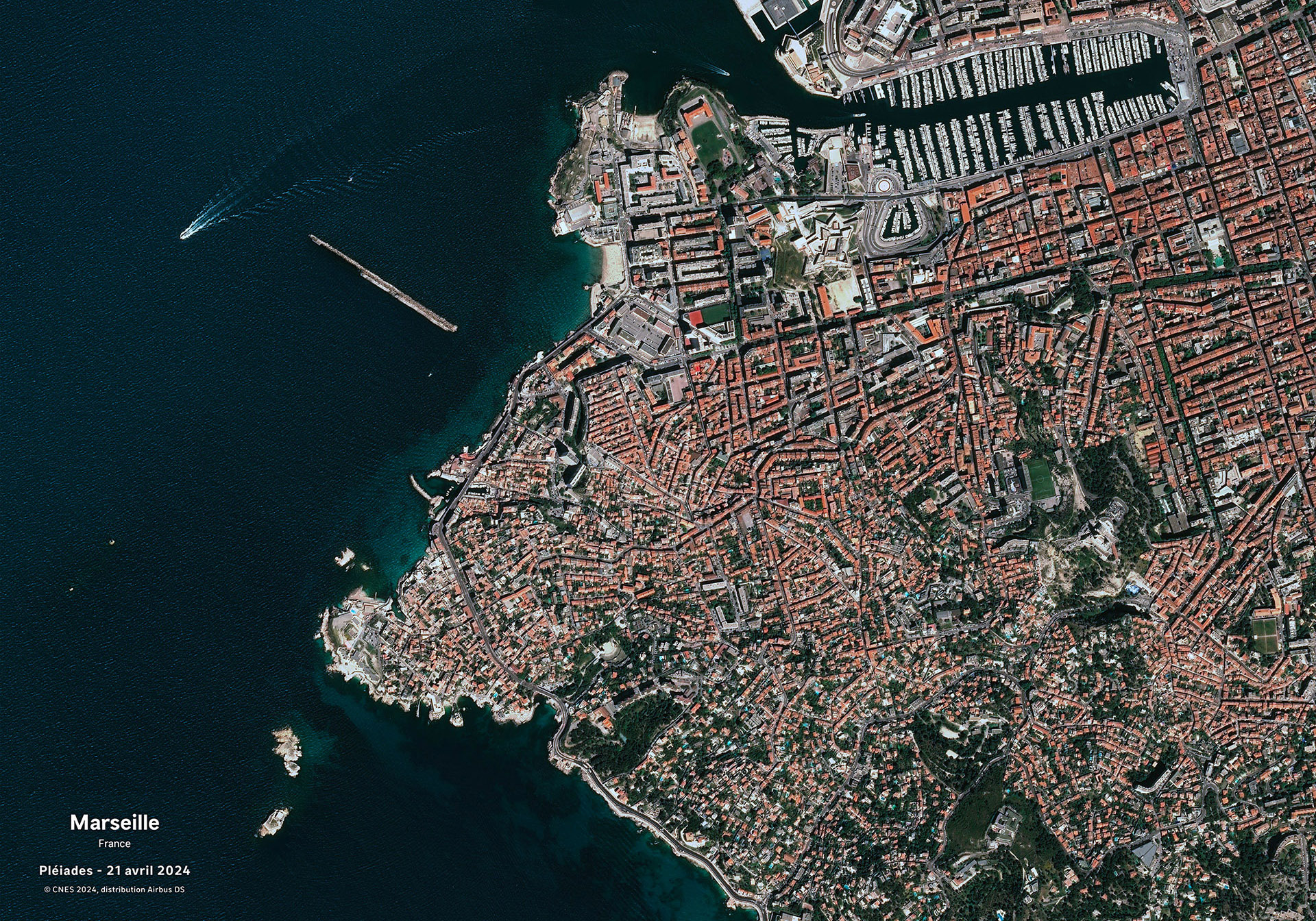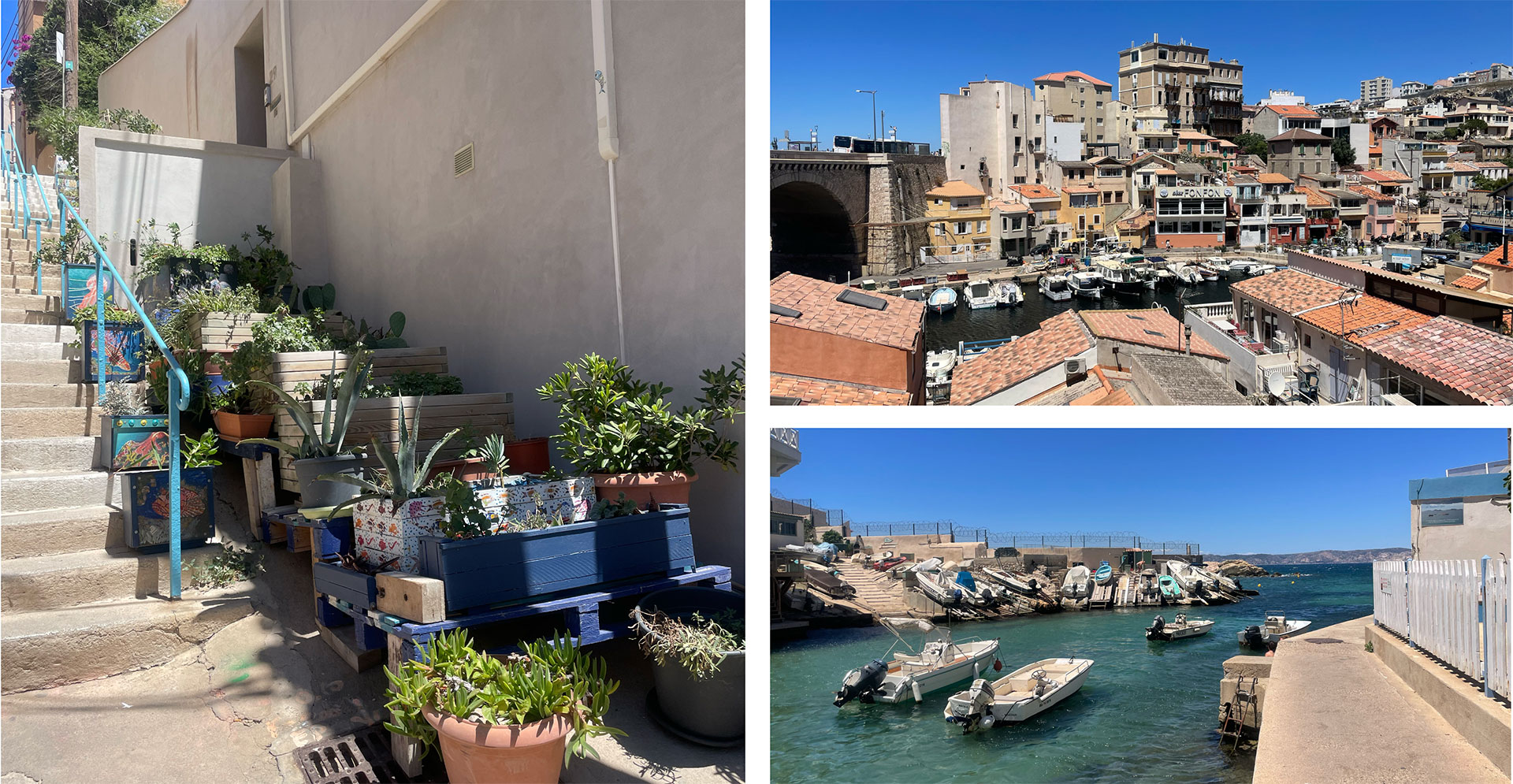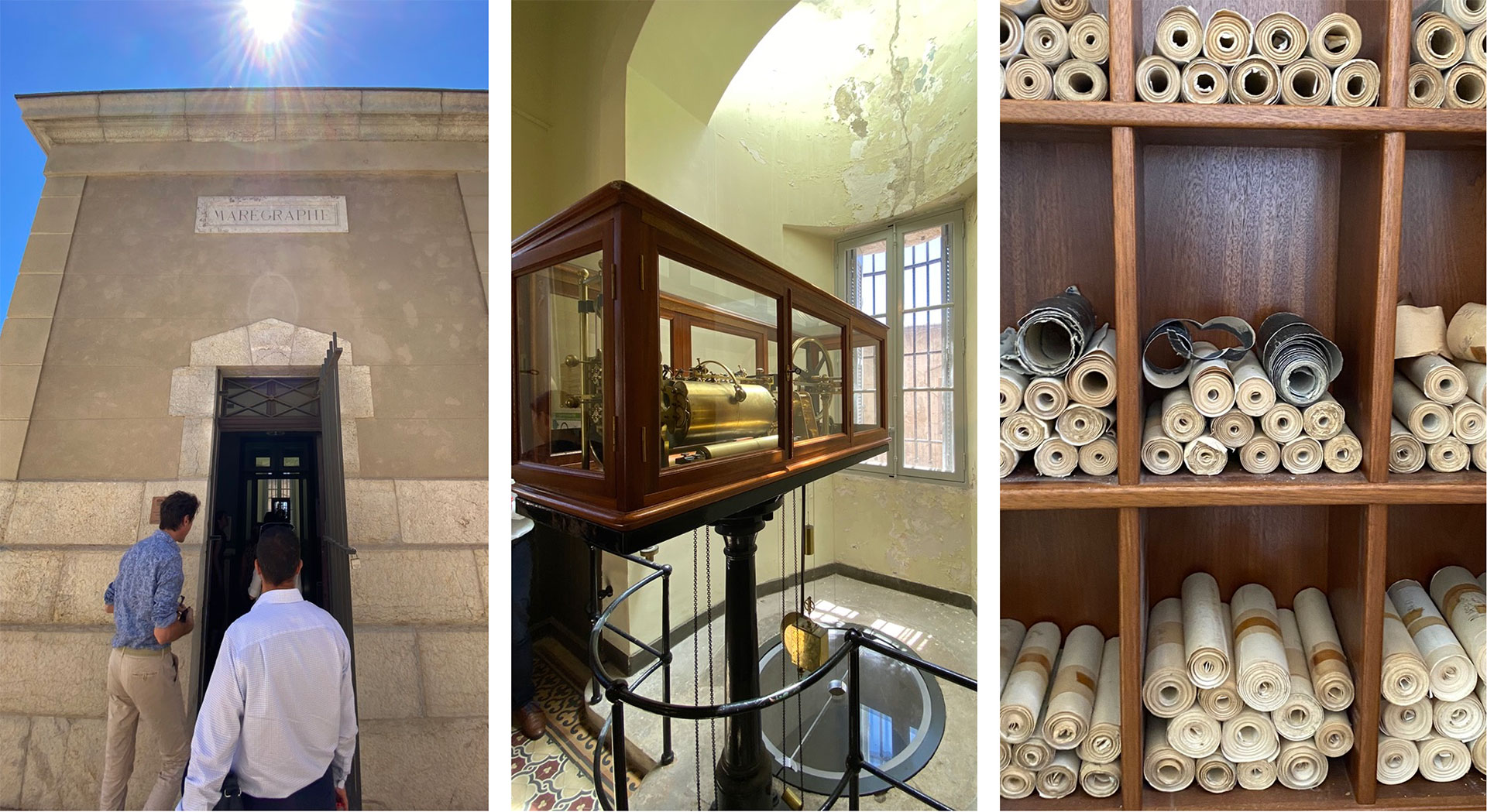11th SCO France meeting
At SCO, video exchanges are a daily occurrence and are essential, given the very different geographical locations of the players involved. But nothing can replace the human link, especially in such a cooperation. To this end, SCO France organizes its two annual meetings - the IOCs for Inter-Organizational Committee - at emblematic locations of its members. On 4 July 2024, the CNRS, the University of Aix Marseille, the Pythéas Institute and the IRD were our guests at the Endoume Marine Station in Marseille, with a video connection for those who couldn't make the trip.
The morning session
With its panoramic view over the Mediterranean and old Marseille, it's hard to imagine a more pleasant meeting room. As the surf murmurs below the open windows, Frédéric Bretar reminds us that "the SCO is five years old, and we've achieved a lot in a short space of time! According to the head of the SCO programme at CNES, "these IOC meetings bring together all the organizations that are at the heart of the SCO in France. While the first IOCs were relatively 'simple', we are now going much further, with strong elements of convergence to bring this initiative and its remarkable portfolio of projects to life".
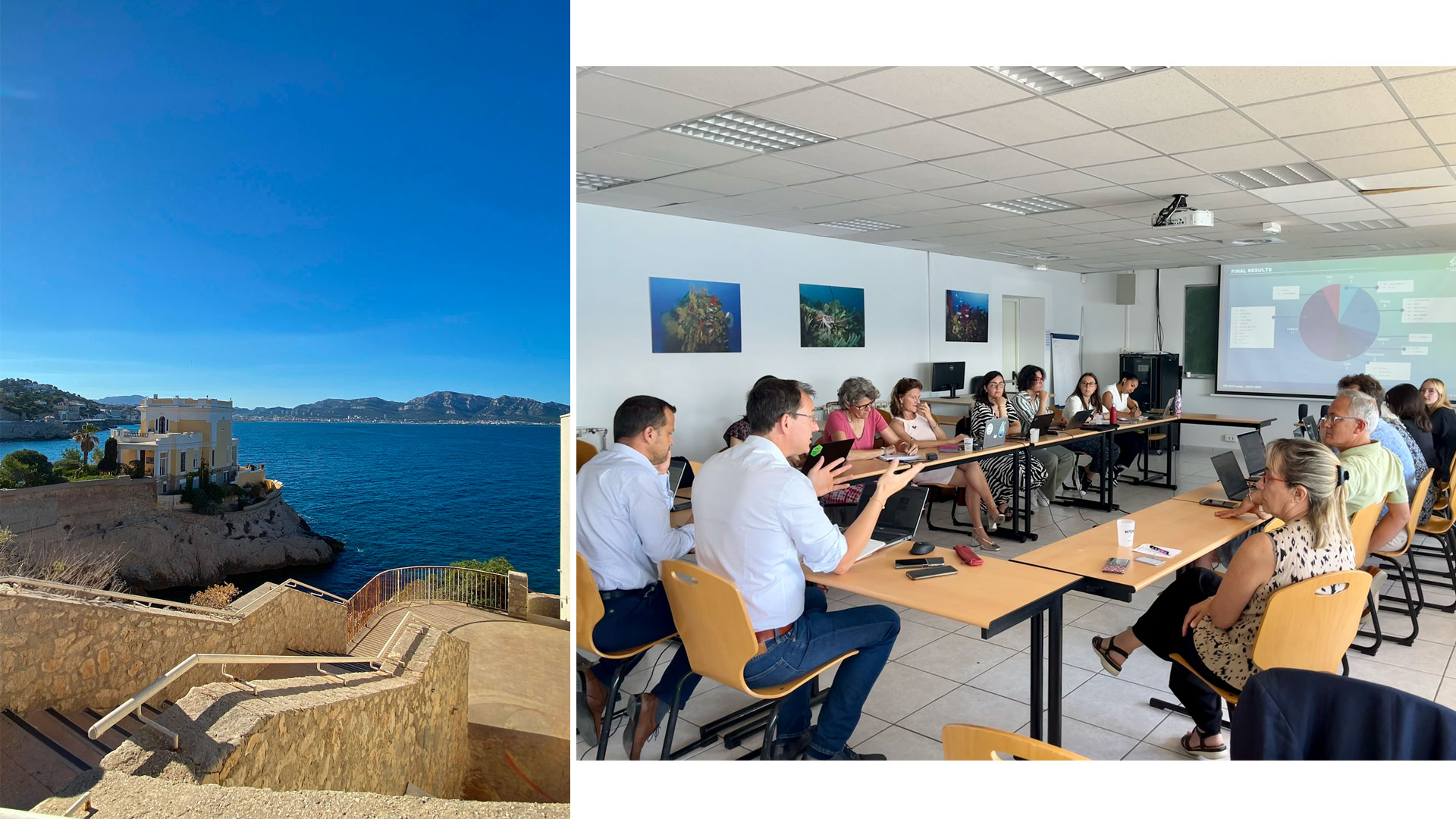
For almost three hours, the discussions were intense and rewarding. In particular, there was a strong emphasis on promoting projects - a recurring theme in the IOCs - and on ensuring the long-term viability of the tools delivered. © SCO
👉International. About a month after the last international steering committee meeting, Laurence Monnoyer-Smith, Director of Sustainable Development at CNES and representative of the SCO, reports on the latest progress, including actions taken and planned to extend its reach. Echoing Frédéric Bretar, she shows just how much "France, thanks to the IOC organizations, is spearheading the SCO, whose interest is undiminished".
👉Call for projects 2024. In anticipation of the annual call for projects (CFP), which will open on 1st September, the participants reviewed the text of the France CFP and the procedures for distributing it as widely as possible.
👉 SCO France. With 68 projects in 35 countries, half of which have been completed, involving 315 partners, SCO France is indeed showing great dynamism. One of the statistics is the high renewal rate of project leaders from one year to the next. In addition to the vigilance of the reviewers who examine applications for accreditation, this is also due to the fact that the regular launch of new Earth observation missions (such as SWOT and soon Trishna, for example) systematically leads to new uses and therefore new users.
👉Support from CNES. As the pilot of the SCO in France, CNES is particularly committed to animating this community and improving its operation. Célie Losada, who is in charge of SCO projects, begins by presenting the feedback exercise conducted with the CNES referents who monitor projects to improve their implementation and anticipate their future, known as the "post SCO" exercise. Célie also suggested that IOC members use some or all of the 11 panels created in the exhibition to raise awareness of the observatory in their respective CNES centers.
👉Communication. A quick retrospective offers a summary of the evolution of the SCO's communication channels and partner sites, including UNEP/WESR and GEOKnowledgeHub. On the website side, while 85% of SCO projects are followed via dedicated news items, there appears to be an increase in the latter: since January 2024 news items relating to projects have accounted for 65% of articles published, compared with around 40% previously. Directly linked to a portfolio of projects and a toolbox that are growing every year, this trend is part of the effort to promote and support the sustainability of SCO services.
👉 Tools and data. With projects and satellite being at the heart of the SCO's work, the morning session sets aside an hour for three presentations:
-
SeSam: presented by Marion Sutton from CLS, the SeSam project detects and locates Sargassum seaweed on a daily basis using three satellites with different resolutions and sensors. Thanks to the seasonal peaks observed, the tool, whose platform is currently being developed, can predict arrivals of sargassum 6 to 7 months in advance, enabling local authorities to take steps to deal with this event, which is damaging in a number of ways (emission of odorous gas, hindrance to fishing activities, negative impact on tourism, high cost of cleaning up, etc.).
-
Littosat: thanks to satellite data, the Littosat platform, presented by Marie Jagaille from Hytech-imaging, offers an unprecedented view of coastlines at high and low tide. For further details, please consult the replay of the demonstration given at the 13th Quarterly meeting of SCO France on 20 June 2024.
-
SWOT: this oceanography and hydrology satellite was announced as a revolution, and it has confirmed it, exceeding all expectations. With unprecedented precision, its potential applications are immense, from understanding the role of the ocean in climate change to identifying and managing the planet's water resources. Supported by images, IOC participants were able to see ocean circulation as never before. Under the commentary of Nicolas Picot from CNES, SWOT demonstrated its versatile power to measure bathymetry and internal tides, detect ships, observe the polar regions, measure the smallest rivers and draw up flood maps... And all this with just one year's worth of data!
Afternoon visits
An absolute success! All the participants present thoroughly enjoyed the two tailor-made tours of the magnificent Phocaean City, on the outskirts of the Endoume Marine Station.
|
► From the little alleyways planted by local residents to the little boat maintenance harbors and the emblematic sites of the Endoume district, everyone was seduced by the beauty of the place and surprised by the remarkable cleanliness of the water. © SCO |
|
|
► At the SCO, projects frequently make use of Digital Terrain Models. Whether the measurements come from satellites or not, we learned that the 0 level, which serves as a reference for all altitudes in France (and Switzerland!), is well hidden in the basement of the Marseille tide gauge, the « Marégraphe », managed by the IGN. Here the participants took a leap back in time, going back to its construction in 1885. Everyone admired the magnificent instrument, which is entirely mechanical and still in working order. The engraved rollers on its stylus have stood the test of time, while the venerable ancestor can sometimes be used to identify a loss of calibration on the automatic tide gauge! © SCO |
|
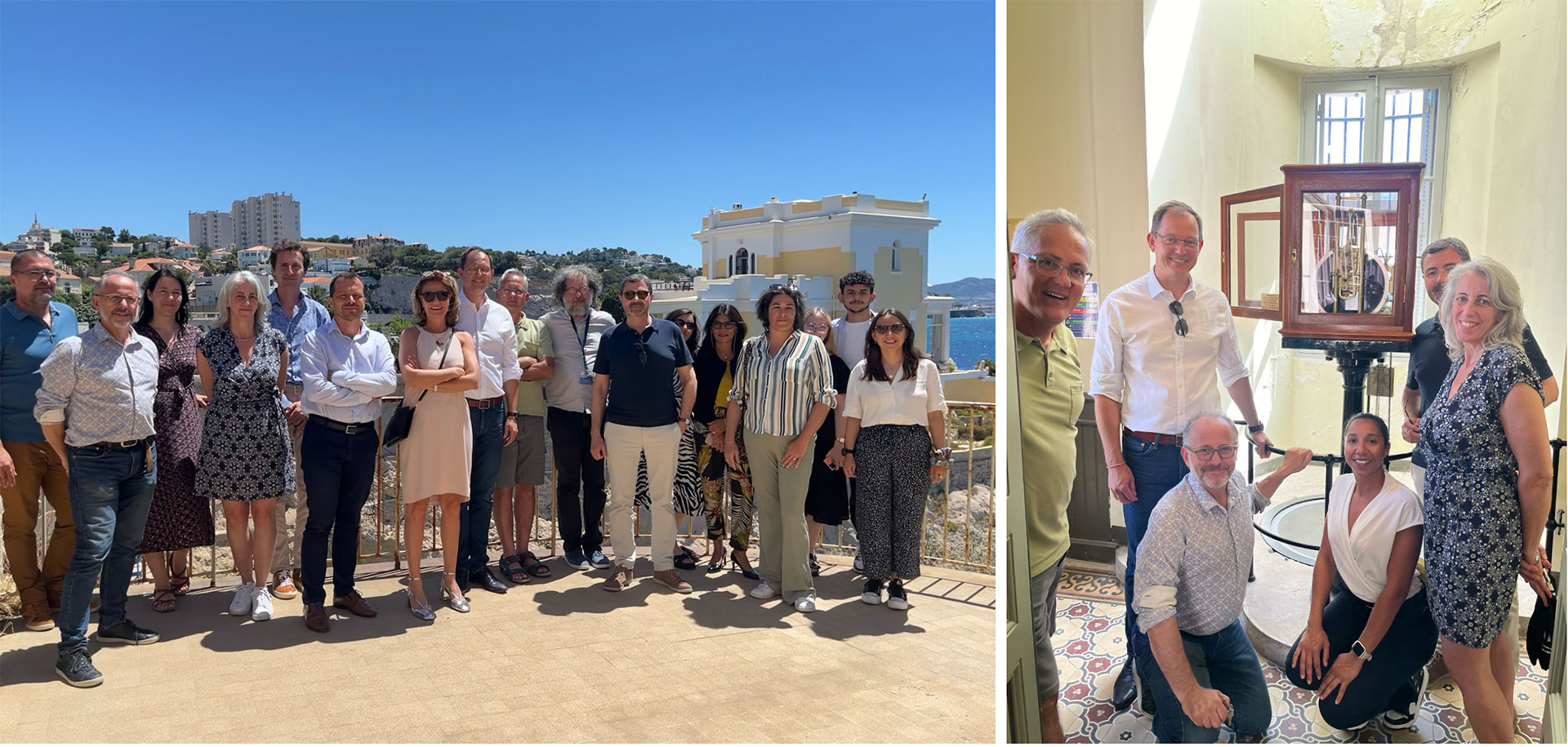
In person and discovering places of interest, there's no doubt that these IOC meetings reinforce the group spirit with conviviality. The smiles on the faces of the participants at the Endoume Marine Station (left) and the Marégraphe of Marseille (right) are testament to this. © SCO
A big thank you to all the participants and see you at the next IOC on 23 January 2025!
-------------
The Comité Inter Organismes brings together the 24 member institutions of the SCO in France. It meets twice a year for a half-yearly review and to look ahead to the next six months.



